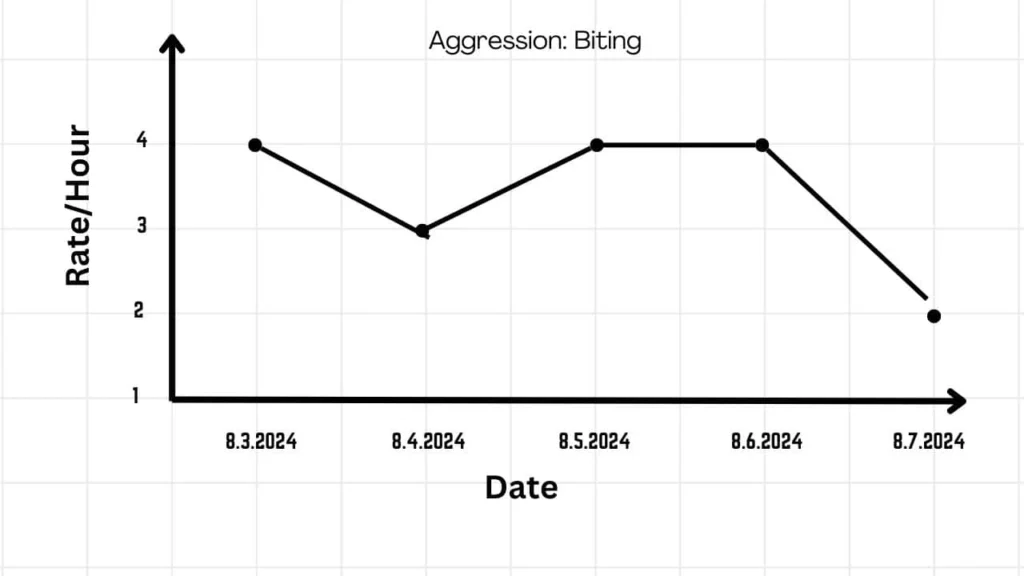RBT Study Guide Measurement: Our free RBT study guide begins with a discussion of measurement. With 12 questions on the RBT test, this is a must-cover subject for anybody preparing to become a Registered Behaviour Technician.
Applications of behaviour analysis (ABA) rely on measurements. As a result, professionals can track and analyse behavioural changes with greater precision. Without measurements, it is impossible to monitor your client’s progress and adjust the therapy and behaviour intervention plans.
Covering topics such as data collecting methods and interpretation skills, this book focuses on fundamental measuring procedures for the Registered Behaviour Technician (RBT) test.
1. Prepare for Data Collection
Before each session, an RBT should be prepared to gather data. When providing services to clients, collecting data is an important part.
Some of the things that a Registered Behaviour Technician needs to collect data are mentioned below:
- Each session requires a paper data sheet and a pen if your firm employs paper data gathering.
- Any session involving digital data collection by your employer requires the use of a tablet or other electronic device.
- To monitor the duration, inter-response time, or response latency of target behaviours, it is recommended that a timer be set.
- For counting how many times a behaviour you want to see happens, you also need a clicker.
2. Implement Continuous Measurement Procedures
Behaviour tracking and recording is done systematically by Registered Behaviour Technicians using a variety of methods. BCBAs are capable of accurately making informed decisions regarding interventions by analysing behaviour patterns.
- On the RBT, you may expect to see questions on the following four kinds of continuous measurement procedures:
- The amount of times or counts of a behaviour or reaction is measured by frequency, which is a continuous measurement method.
- The time elapsed between the end of a discriminative stimulus (SD) and the start of a response is known as latency.
- Duration is a measure of how long a behaviour is maintained by an individual.
- The time that passes between occurrences of a certain behaviour is measured by inter-response time (IRT).
3. Implement Discontinuous Measurement Procedures
Some occurrences of behaviour are measured using discontinuous measurement processes, whereas others are not. When keeping track of every instance of behaviour becomes too much of a hassle, this approach is used. Discontinuous measuring methods may be broadly classified into three types:
- The observer keeps track of how often the behaviour occurs using whole interval recording. When you want to encourage a certain behaviour, this is the way to go. Nevertheless, the behaviour may not be as evident as it is.
- During partial interval recording, the watcher writes down if the behaviour happened at any point during the interval. This method is often used to stop behaviours that aren’t wanted. Nevertheless, it might exaggerate the frequency of the behaviour.
- A technique called “momentary time sampling” allows the observer to keep tabs on when a behaviour occurs. As fast as a shutter click, the observer verifies that the action is taking place in the present.
4. Implement Permanent-Product Recording Procedures
It is a behaviour analysis measurement procedure that emphasises the outcome rather than the process, known as permanent product recording. The observer will make sure the client followed the instruction to make their bed before going outside by checking whether it was still made when they got outdoors. It’s the same as checking the result instead of watching the client make the bed.
5. Enter Data and Update Graphs
Charts and diagrams are employed to present the behaviours and skills that the RBTs record. Treatment choices are based on the BCBAs’ analyses of those visual data. The ability to use a digital data system to create charts and graphs from collected data is an essential skill for any certified behaviour technician.
The Y-axis of the following chart indicates the client’s biting rate (behaviour), while the X-axis shows the date (or session number). An RBT should show the BCBA the graphical data in this way.
The biting rate decreased after the first session (8.3.2024 to 8.4.2024), increased after the second session (8.4.2024 to 8.5.2024), remained constant after the third session (8.5.2024 to 8.6.2024), and then experienced a significant decline after the fourth session (8.6.2024 to 8.7.2024), as can be seen in the chart below.

6. Describe Behavior and Environment in Observable and Measurable Terms
Behaviour and environments are descriptively described in Applied Behaviour Analysis (ABA) through the use of observable and quantifiable terms. This implies that the emphasis is solely on actions that can be objectively observed and quantified. Your own opinions and assumptions should not be used as the basis for adding language.
For example, instead of writing, “The child was really anxious today,” we would write, “The child avoided eye contact, fidgeted, and spoke softly. Followin
